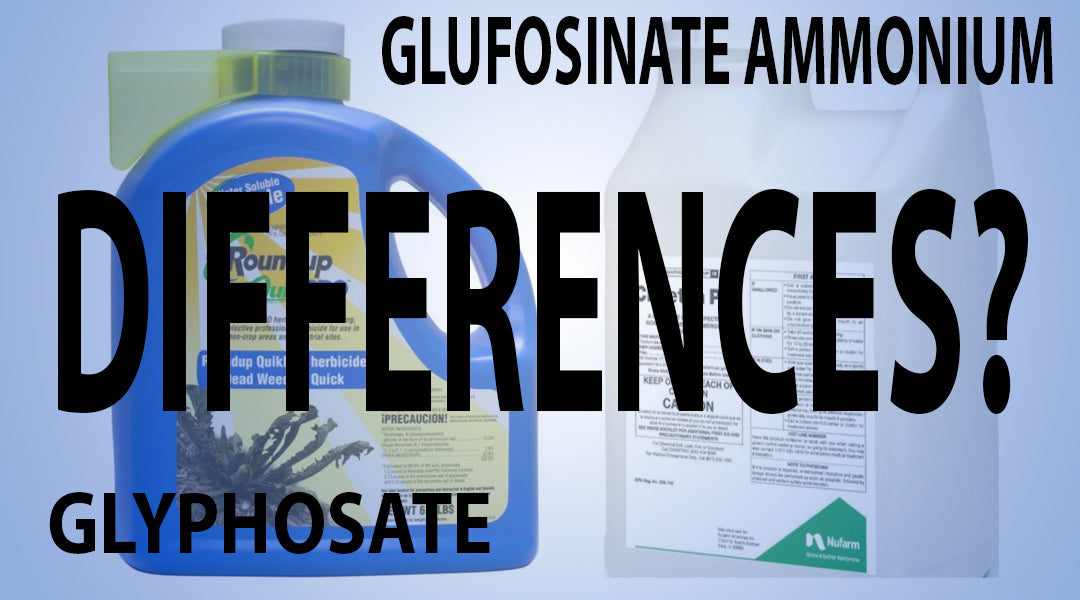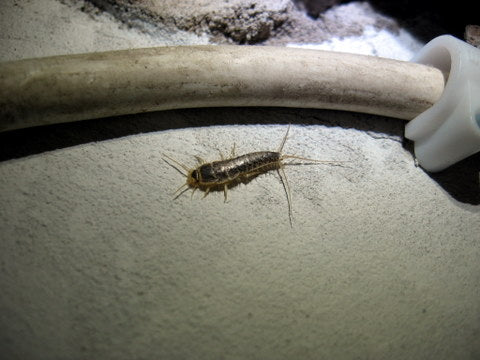Spider mites, also referred to as web-spinning mites, infest home and agricultural areas around the world. They spin their webs on the stems and the underside of the leaves where they also lay dozens of eggs. This webbing makes it easy to identify an infestation and distinguish web-spinning mites from different mite species and other plant-damaging pests such as aphids.
How to Identify Spider Mites

Image of a Red Spider Mite on a leaf.
You might not see spider mites at first glance; however, if you look closer, you'll notice tiny dots moving frantically over the leaf's surface. Gazing through a magnifying glass reveals an entirely different picture and gives you a close-up look of these invasive pests at work. Numerous spider mite species live and thrive in backyard gardens and in greenhouses, and you can identify many of them by examining their body type, color and markings. Some of the most common spider mites include:
- Two-spotted spider mites: These mites were once only native to Europe and Asia, but they have spread across the world in shipping containers. They range in color from dark red to green, which makes them even more difficult to see against the leaves. Under magnification, you can see two dark spots along their backs. Two-spotted spider mites have small, oval-shaped bodies and feast on everything from vegetables to flowers.
- Southern red mites: Red mites have a red appearance and bulbous-shaped bodies. They mostly attack broadleaf plants and often invade shrubs and herb gardens. Red mites not only feast on the cell content within leaves but also on the fruit itself, creating even more havoc in agricultural crops. They thrive in cool weather during the spring and the fall and usually go dormant in the summer.
- Spruce mites: These mites feed on needle-leaved conifers and cause massive damage in tree farms. As hatchlings, they appear lighter green in color and turn darker as they mature. Spruce mites also prefer cooler weather and lay their eggs at the base of the needles to survive the winter.
Other common spider mites include the European spider mite and the citrus mite. Regardless of the species, each of these mites threaten plants wherever they go. In small numbers, they cause insignificant damage to plants. However, these tiny arachnids can destroy entire crops and greenhouse plants without careful management and control.
The Spider Mite Life Cycle
Depending on the location, some spider mites can feed and reproduce throughout the entire year as long as the plants retain their leaves. In cooler areas where trees and plants drop their leaves, spider mites spend the winter under the bark or in ground litter. They return to feeding and reproducing once the weather permits and the leaves grow green and strong.
Spider mite development varies depending on the species, but each mite goes through similar life cycles. This cycle includes the egg, the larvae, two nymph stages and the final adult stage, and the entire development cycle can take anywhere from five to 20 days under ideal conditions. Female spider mites live between two and four weeks and can lay several hundred eggs during their lifetime.
The eggs, which are translucent and have a spherical shape, look like tiny water droplets against the leaves. As the spider mites develop inside the casing, the eggs transition from being translucent to having a cream color. The hatchlings then break out from the eggs and have only six legs; however, they develop all eight legs as they mature. The young feed on the underside of the leaves and continue to damage the plant as they develop into adults.
Spider Mites and the Damage They Cause

Severe spider mite damage to leaves.
Spider mites, unlike their larger arachnid cousins, don't have fangs for biting into their prey. Instead, they have piercing mouthparts that penetrate the leaves and suck out the sap. A few spider mites have minimal impact on a plant, but larger populations can start to show visible damage to the leaves and kill the entire plant without proper control.
The first sign of spider mite damage appears as small, lightly colored dots along the leaves. After a while, vibrant leaves may fade in color and appear to have a bronze sheen. As the spider mite population grows and continues to feed on the plant, the leaves will turn yellow or red and fall to the ground. By this time, you can easily identify a spider mite infestation as the webbing covers much of the leaves and the stems.
You'll probably notice leaf and stem damage long before you ever see any spider mites, so inspect your plants regularly to prevent a few spider mites from evolving into a devastating population. To identify a possible spider mite infestation, you should:
- Quarantine any plant that may have spider mites.
- Examine the underside of the leaves for webbing.
- Inspect the entire plant with a magnifying glass.
- Check the leaves for small dots and yellow markings.
Spider mites target everything from ornamental potted plants to agricultural crops. Vegetable crops and fruit trees suffer massive leaf loss, which causes sunburning and reduces yield for the harvest. On ornamentals, spider mites ruin the plants' aesthetic appeal and can also kill the plants if the infestation grows out of control.
Controlling and Managing Spider Mite Infestations

A predatory mite (Anderline aa) preying on a plant-damaging mite.
Thankfully, spider mites have many natural enemies that help reduce infestations and limit population overgrowth. Some of these natural predators include:
- Phytoline P (Phytoseiulus Persimilis)
- Amblyline cu CRS (Predatory Mite)
- Anderline aa (Predatory Mite)
- Exhibitline sf ( Predatory Thrips)
In many cases, the predators take care of entire infestations without the need for human intervention. Due to chemical spraying and the loss of beneficial insects, spider mites may have less predators to worry about in the area. However, the mites may also run rampant in greenhouses and interiorscapes where workers prefer not to use chemical pesticides. These areas have less natural predators, providing a safer breeding ground for mites to grow in numbers.
Even with chemical treatment, not all pesticides work to kill spider mites. However, some pesticides have special formulas that not only eradicate spider mites but do so without harming the plant in any way. Whether you choose biological control or chemical miticides depends on the treatment area and the severity of the problem.
Monitoring the Target Area
You should always check for mites before you apply any treatment to an area. Sometimes, you may notice leaf damage after the mites have already left the plant, so treating the plant may only cause more damage depending on which treatment method you use. Because spider mites are difficult to detect, use a handheld magnifying glass to observe the leaves more closely. You can also hold a sheet of white notebook paper under the leaves as you shake the plant. The mites should fall off the leaves and onto the paper where you can see them more clearly.
After you've detected a spider mite infestation, the next step involves choosing a treatment option for eliminating the threat. You have three primary treatment options to choose from: biological control, chemical control and cultural control. Each method has its own advantages and disadvantages, and you may have to combine different methods to get a more effective result.
Choosing Biological Control for Eliminating Spider Mites
When spider mites have taken over gardens, crops and ornamentals, introducing natural predators into the area can have a profound effect. Natural enemies such as Galendromus occidentalis, a predatory mite, hunts and feeds on web-spinning mites. These predatory mites are about the same size as spider mites but have longer legs and teardrop-shaped bodies. They run very quickly and continue to feed on spider mites until they've vanished from the plant.
Predatory mites don't feed on plants or become pests themselves. In fact, if they have no food source available in the area, they either starve and die or move elsewhere in search of prey. You can purchase predatory mites and other natural spider mite enemies as adults and release them directly on the target plants. It only takes one predator mite for every 10 spider mites to reduce population numbers. Once the predator mites have established on perennials, they may reproduce and provide residual control.
Using Chemical Control to Combat Spider Mite Infestations
Floramite SC, Avid 0.15EC and Forbid 4F for killing spider mites.
Applying chemical insecticides in the target area comes with risks. After all, if insecticides kill beneficial mite predators, you're essentially making things worse. Carbaryl, a common chemical in pesticides, appears to affect spider mites in a positive way. In field studies, the carbaryl actually helped the spider mites to reproduce faster than mites that were left untreated. In addition, applying the insecticide during hot weather caused severe mite outbreaks within days.
Because mites don't belong in the same category as insects, they require a different form of treatment. Miticides, such as Avid 0.15 and Floramite SC, target invasive mites while minimizing the impact on surrounding insects. These miticides work to control spider mites of all types, from the two-spotted spider mite to the clover mite. Miticides like Floramite SC help to eliminate spider mites in:
- Greenhouses
- Plant nurseries
- Conifer plantations
- Interiorscapes
- Landscapes
- Public, commercial and industrial areas
- Golf courses, parks and other recreational sites
Relying on Cultural Control for Spider Mites
Dry, dusty conditions can lead to spider mite infestations in agricultural crops and throughout landscapes. To help minimize an outbreak, apply water to dusty areas and pathways regularly. Spraying trees and plants with water slows the mites' progress and the damage they cause. You should also provide sufficient irrigation to wash away the mites as they build up on the plants.
Forcefully spraying water on plants in home gardens also helps to reduce spider mite numbers especially if you provide thorough coverage on and beneath the leaves. For added control, combine the water with insecticidal soap or oil to eradicate even more mites on the plants. However, test the soaps and oils on one or more plants first to see how they react to the treatment.
Preventing Spider Mite Infestations on Foliage
Performing preventative maintenance in the garden and on trees and shrubs can help eliminate spider mite infestations before they occur. Water the target area at adequate intervals, and use natural soaps and oils to limit populations without harming other insects. Avoid broad-spectrum pesticides that kill beneficial predators, and introduce natural predators like ladybugs to the area when you can. Being mindful of spider mites and taking preventative measures beforehand can help you avoid a serious mite outbreak and keep your plants safe, healthy and vibrant.
In writing this piece the knowledge and insight was gained through learning journey. The thoughts expressed here was learned through extensive reading and research. I was truly amazed at the amount of information that is available. A person could spend hours looking and learning on www.uvm.edu/%7Eentlab/Greenhouse%20IPM/UVMGreenhouseIPM.html The information compiled by Ms. Frank Sullivan and Skinner is both interesting and informative. You do not have to have a dictionary next to you to understand the information that is being presented and it does not put you to sleep. The UC IPM site by UC Davis www.ipm.ucdavis.edu/index.html is also a treasure trove of information and guidance. This is another public website that I am happy to say is tax payer money well spent along with the Cornell Garden-Based Learning resources available at http://gardening.cce.cornell.edu I look forward to hearing your thoughts on this subject.







Kathleen Smith
September 05, 2018
Do spider mites move from tree to tree ? Arborvitae in a row.. for example.
Also if the arbor vitae is totally brown, are the mites still there or do they leave?